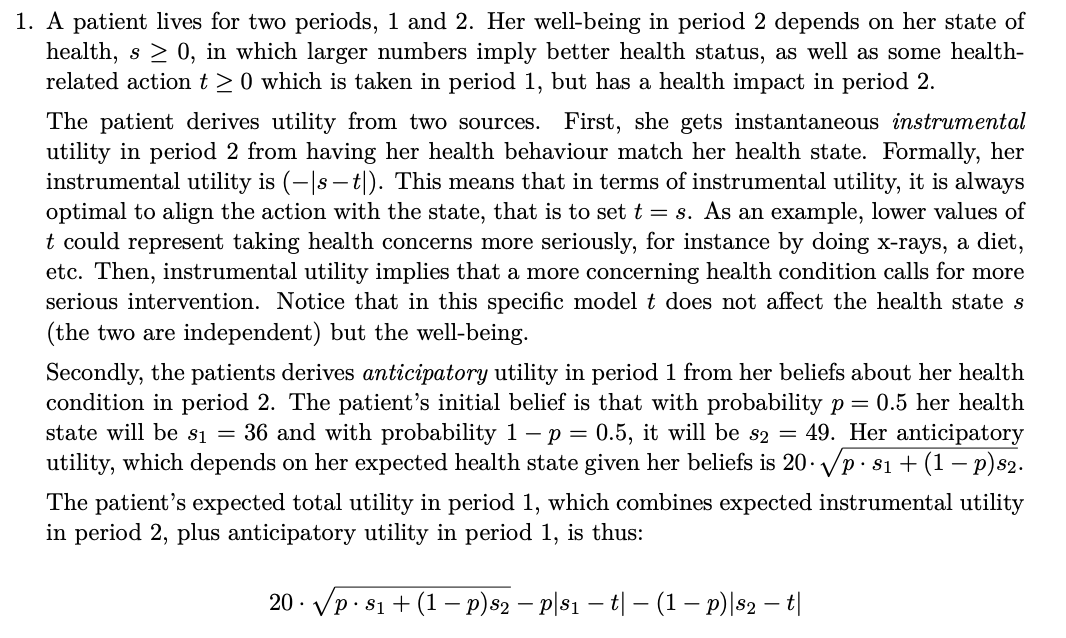1. A patient lives for two periods, 1 and 2. Her well-being in period 2 depends on her state of health, 3 2 0, in which larger numbers imply better health status, as well as some health related action t Z 0 which is taken in period 1, but has a health impact in period 2. The patient derives utility from two sources. First, she gets instantaneous instrumental utility in period 2 from having her health behaviour match her health state. Formally, her instrumental utility is (ls tl). This means that in terms of instrumental utility, it is always optimal to align the action with the state, that is to set t = s. As an example, lower values of t could represent taking health concerns more seriously, for instance by doing xrays, a diet, etc. Then, instrumental utility implies that a more concerning health condition calls for more serious intervention. Notice that in this specic model t does not affect the health state 3 (the two are independent) but the well-being. Secondly, the patients derives anticipatory utility in period 1 from her beliefs about her health condition in period 2. The patient's initial belief is that with probability p = 0.5 her health state will be 31 = 36 and with probability 1 p = 0.5, it will be 32 = 49. Her anticipatory utility, which depends on her expected health state given her beliefs is 20- p - 31 + (1 p)32. The patient's expected total utility in period 1, which combines expected instrumental utility in period 2, plus anticipatory utility in period 1, is thus: 20- Vp-S1+(1 -p)32 -p|81 -t|-(1-p)|82 -t| In period 1, the patient has the option of visiting a doctor to get diagnosed. The visit is free, and will remove any doubt about her future value of s. (In other words, her beliefs about 13 will go either to p = 0 or to p = 1). If she does not visit the doctor, she will not learn any information about 3, and will keep believing that the two states are equally likely. After deciding whether to go to the doctor, and after getting the diagnosis if she does go, the patient then chooses What health action t to take








